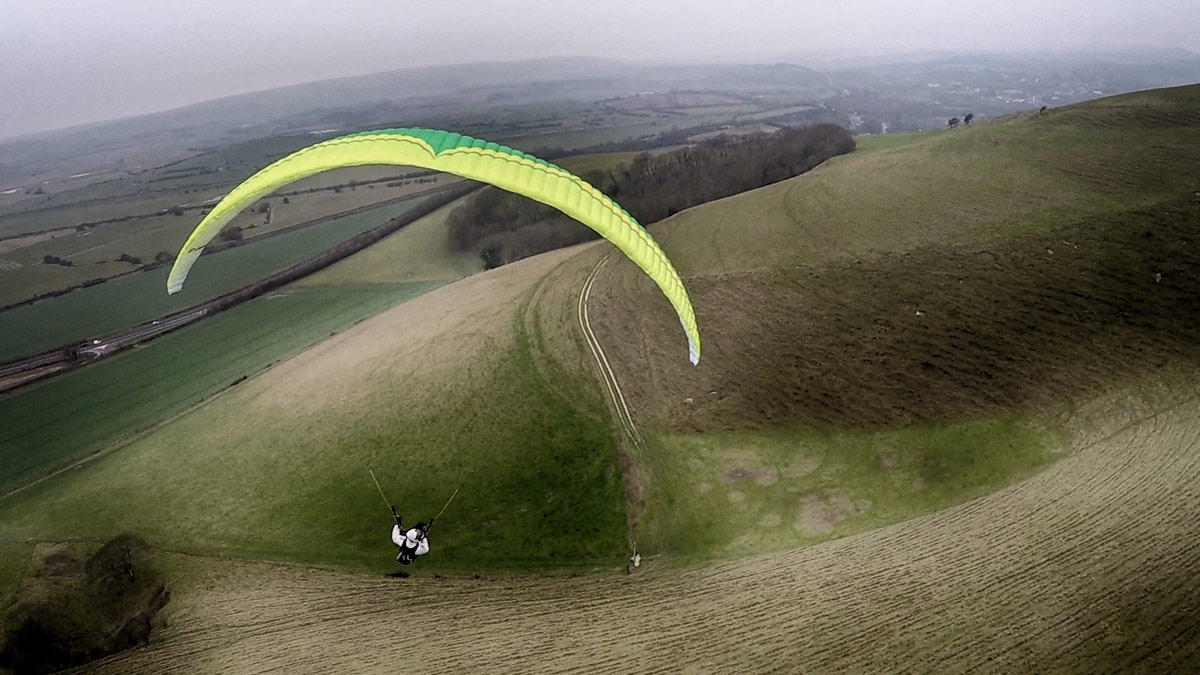
The Ozone DELTA 2 was a very popular wing in the Sports Class (EN C). I thought it was a joy to fly, ideal for exploring, adventuring, and having an absolute blast in the sky. Sensitive, sleek, stable and smooth, it was as Ozone promised – a truly superb wing. Could it be improved upon?
Ozone thought so, but then they hit a snag: the EN tests had been changed. The use of collapse lines was now an instant fail for an EN C wing. For a while there was even some speculation that the DELTA 3 would be released as an EN D, but thankfully Ozone designed their way around this speedbump. It comes to us promising “a wing that feels more agile and efficient in active air or while thermalling, has noticeably increased performance, and is every bit as pleasurable to fly.”
I took a MS size (75-95kg flown at 92) to the hill to test this claim. These are my impression from my first flights in winter conditions in the UK.
Delta 3: Construction
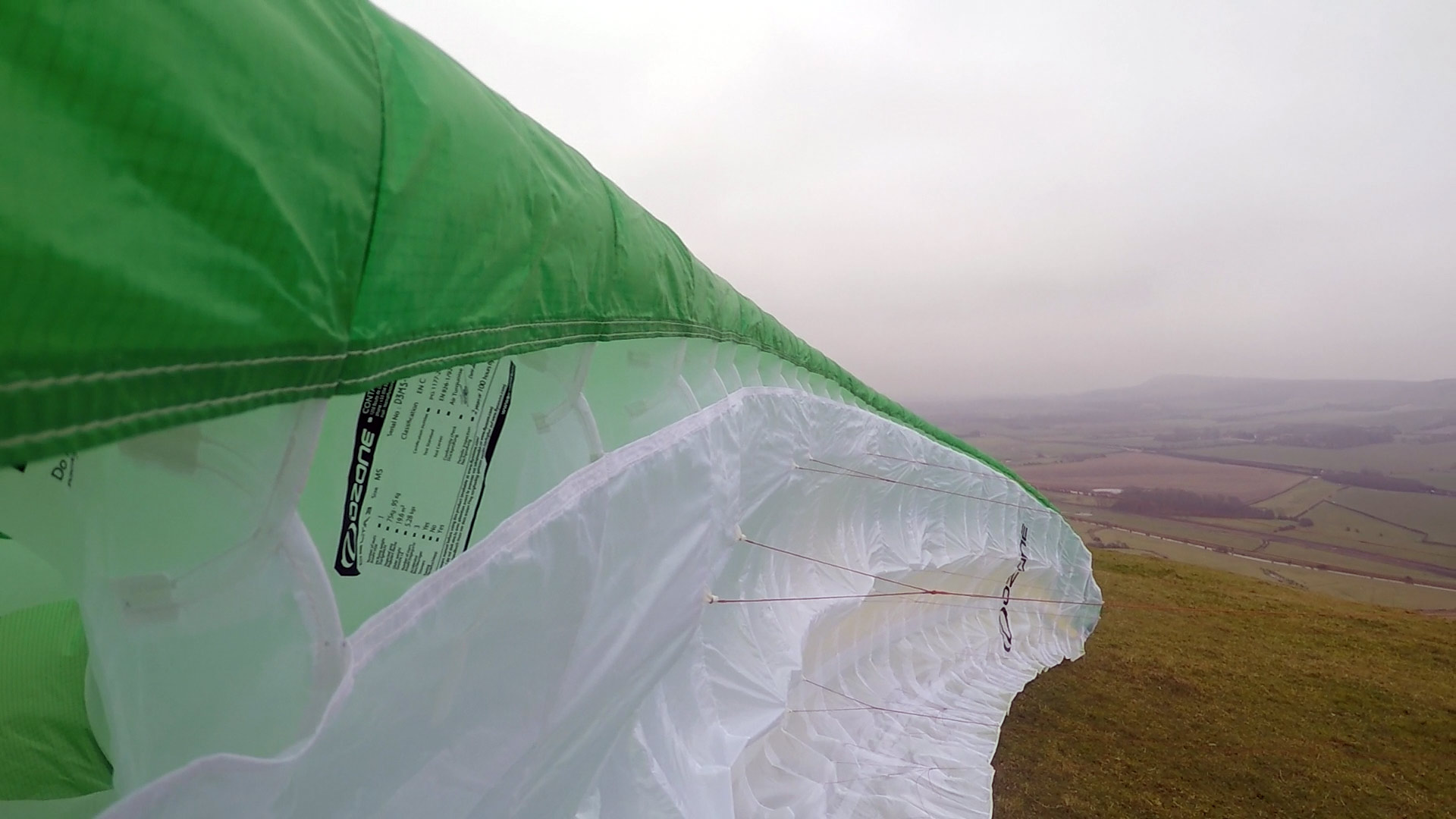
The risers are very slim and have a minimalist feel, but are completely adequate for easy handling. Plastic inserts keep the lines secure; split As, small C handles, brakes on metal poppers. All the lines are unsheathed and red, which can make sorting things out a bit challenging, in particular finding the stabilo line for pulling out cravattes on the ground (which it likes to do). But the lines were tangle-free during my time with the wing.
The flexible reinforcing rods need to be looked after because they like to invert and pucker the top surface, but under the tension of flying these wrinkles go away.
Delta 3: Ground handling
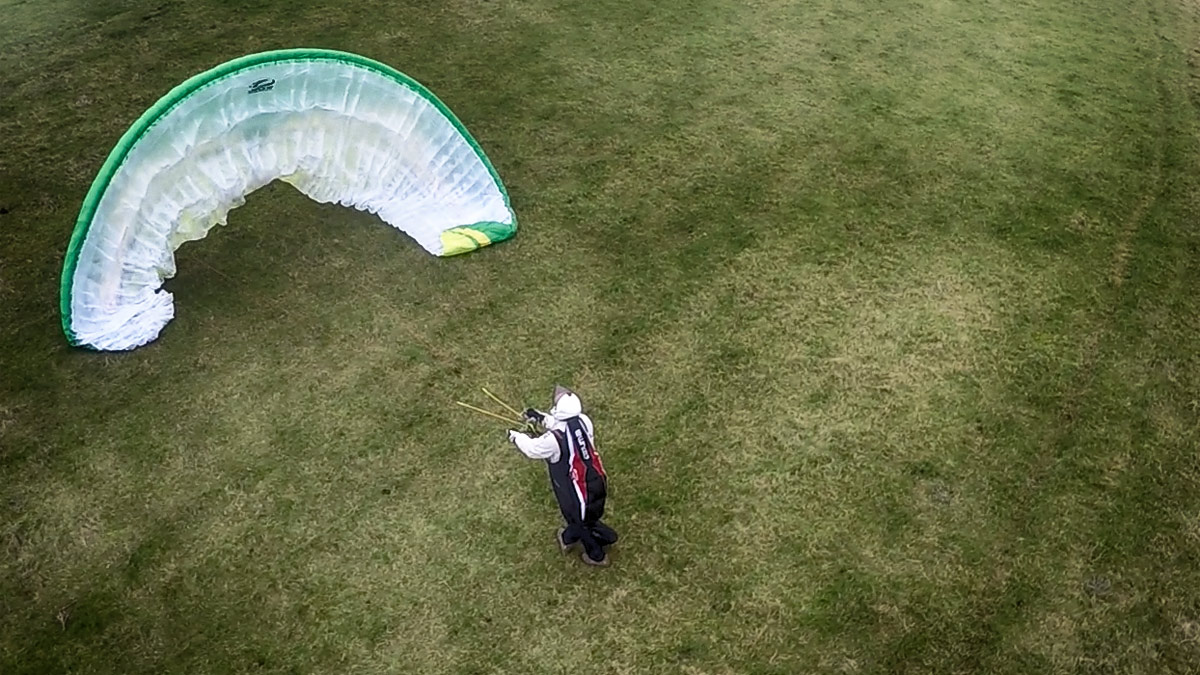
The wing generates a strong steady pull, and needs to be pinned down with the C risers in strong winds, as it will try to rise up with only the brakes engaged. You can easily pop the wing up without using the As in strong conditions, which simplifies launching. In lighter conditions it responds very well to As and Cs control, allowing you to kite back up a slope with a steady wing at a low angle. Overall I found the ground handling easy, due to the large brake range and tendency of the wing to stay alive.

There is a lot of protection of the stall point – the moderate brake pressure ramps up and becomes really heavy, and still the wing didn’t stall. You have to muscle it past this wall to get it down.
Delta 3: In the air
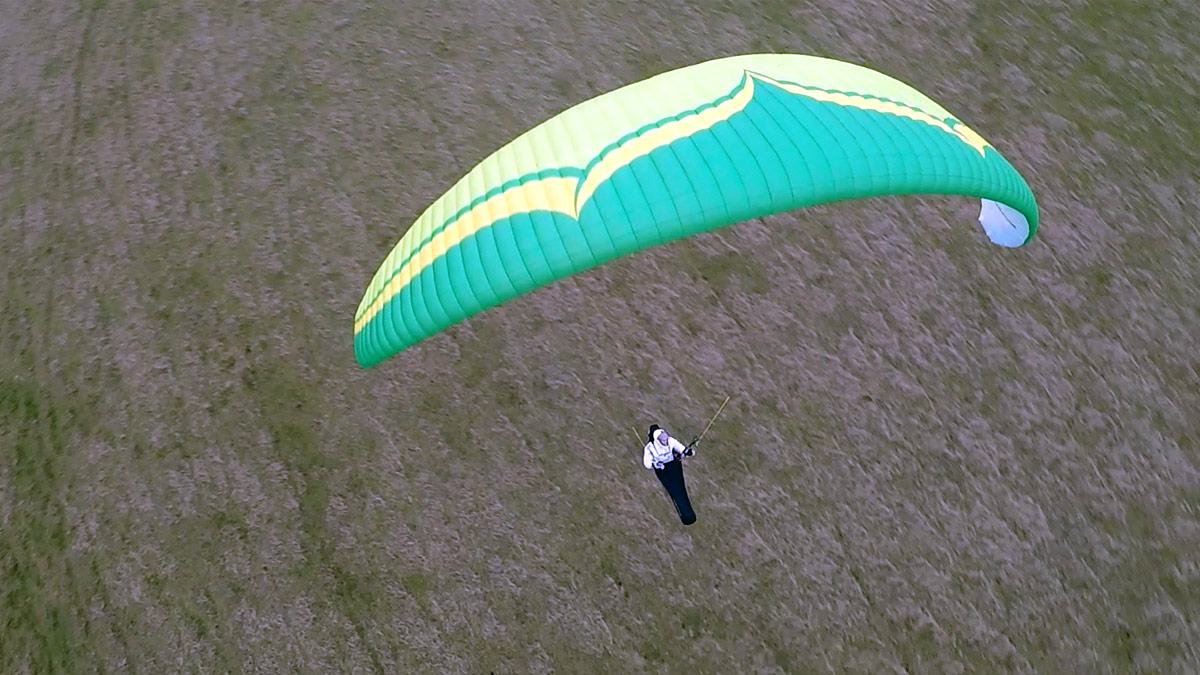
The wing provided good feedback, delivering information via ‘poking nudges’. I soon began to feel where the feedback was coming from. There’s some roll movement (the wing isn’t rigid) so you can easily tell which side the lift is on. I particularly liked how the feedback continued with some brake applied (some wings lose sensitivity at this moment, and feedback comes only through the brakes thereafter). This gives you all you need for thermalling. You can continue to read the air around you while turning.
Delta 3: Handling
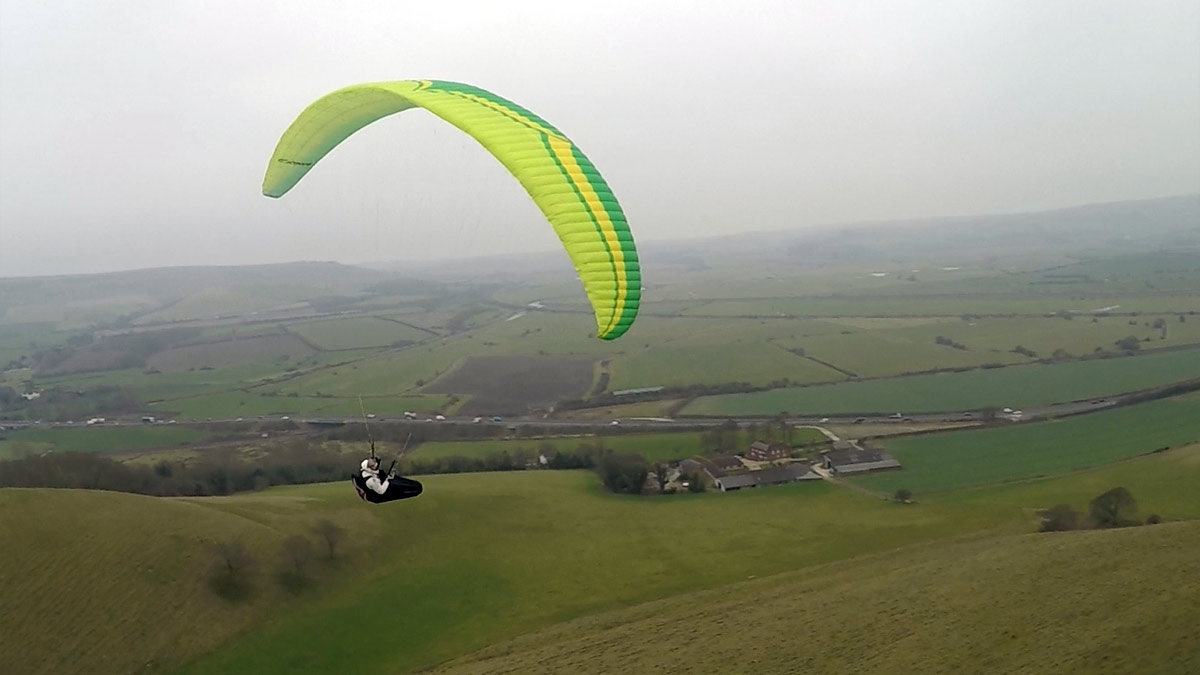
The brakes are firm, and engage after 15cm or so. Another 15cm and you get an instant response from the wing, providing a tight flat turn. The moderate brake pressure isn’t exactly heavy, but it’s certainly obvious you have them engaged. They are very effective - you can turn this wing on a dime.
Ozone says “The early section of the control range is much more responsive, making micro-adjustments easier and improving thermalling performance significantly.” It felt that way to me, and it means thermaling is possible in a very comfortable position.
If you push too hard on a corner, the wing slowly winds into a spiral, generating airspeed to keep you safe. There’s no tendency to slip or spin, which I think is very good for this class.
Leaning into the corners will bring the wingtip down onto the horizon and give a tighter turn. You can mix and match your brake and weightshift to get exactly what you want. Wingovers are easy to access, and you can get high quite fast with a very good coordinated feeling and no funny energy to compensate for.
Climbing out from spiral turns and swoops is effortless with the wing working well to convert without pitching.
Delta 3: Stability
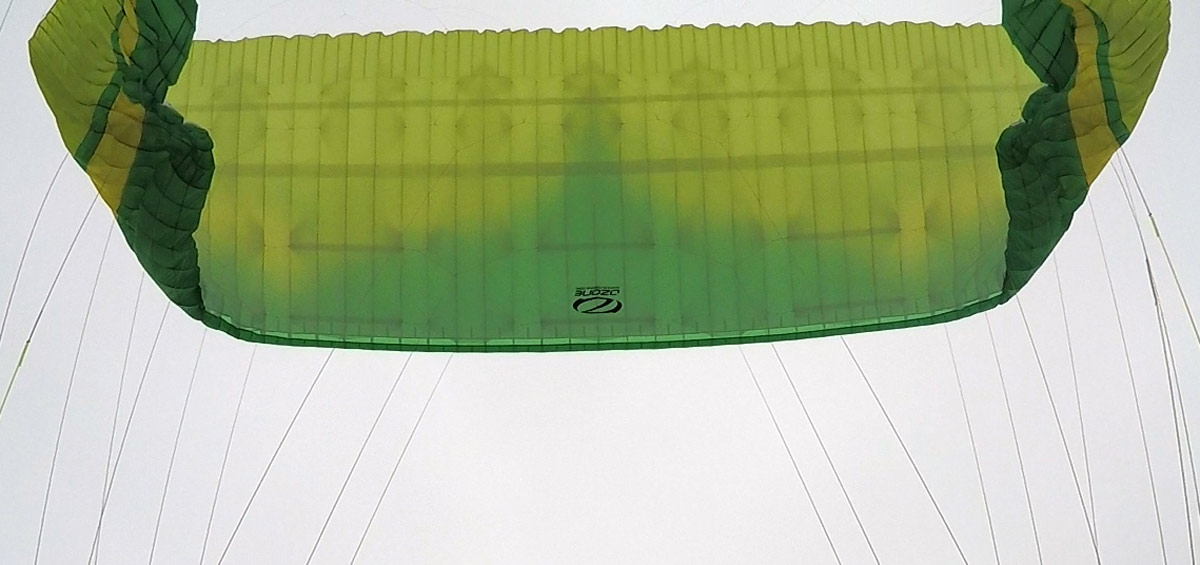
Big ears were effective and simple, flapping a little but not excessively. They required a deep pump to clear, and another to clear the tips, which is more effort than most wings require. It did not seem to affect reinflation of the asymmetrics I tested, which came out slowly on their own.
Pitch energy is available: if you release the brakes, it will search slightly ahead. Building up pitches is easy, but not excessive, and if left to sort itself out the Delta 3 dampens the pitch energy well, without being too dampening. The balance is just right for the class.
Roll energy is available too, but it’s stable by nature, offering a calm ride that you can control. I didn’t notice any yaw in the wing, it is cohesive and reassuring.

Ozone say they’ve increased the top speed of the Delta 3, but it’s not particularly fast. The wing felt more alive on speedbar: I felt the need to have my hands on the C-handles to be ready for any sudden corrections (but I didn’t need any). If anything the stability increased towards the second half of the travel, but Ozone do recommend backing off full bar in turbulence rather than relying too heavily on the rear risers for controlling pitch. This is because the Cs are not linked to the Bs so you can cause a crease in the wing.
As for gliding and climbing, I’ve no doubt it’s competitive. Where this wing wins is handling. If anything the pilot demands are lower than on the Delta 2, putting the wing comfortably in the mid-to-low part of the Sports Class (EN C) while offering a similar good feeling and even better performance.
Delta 3: Who’s it for?
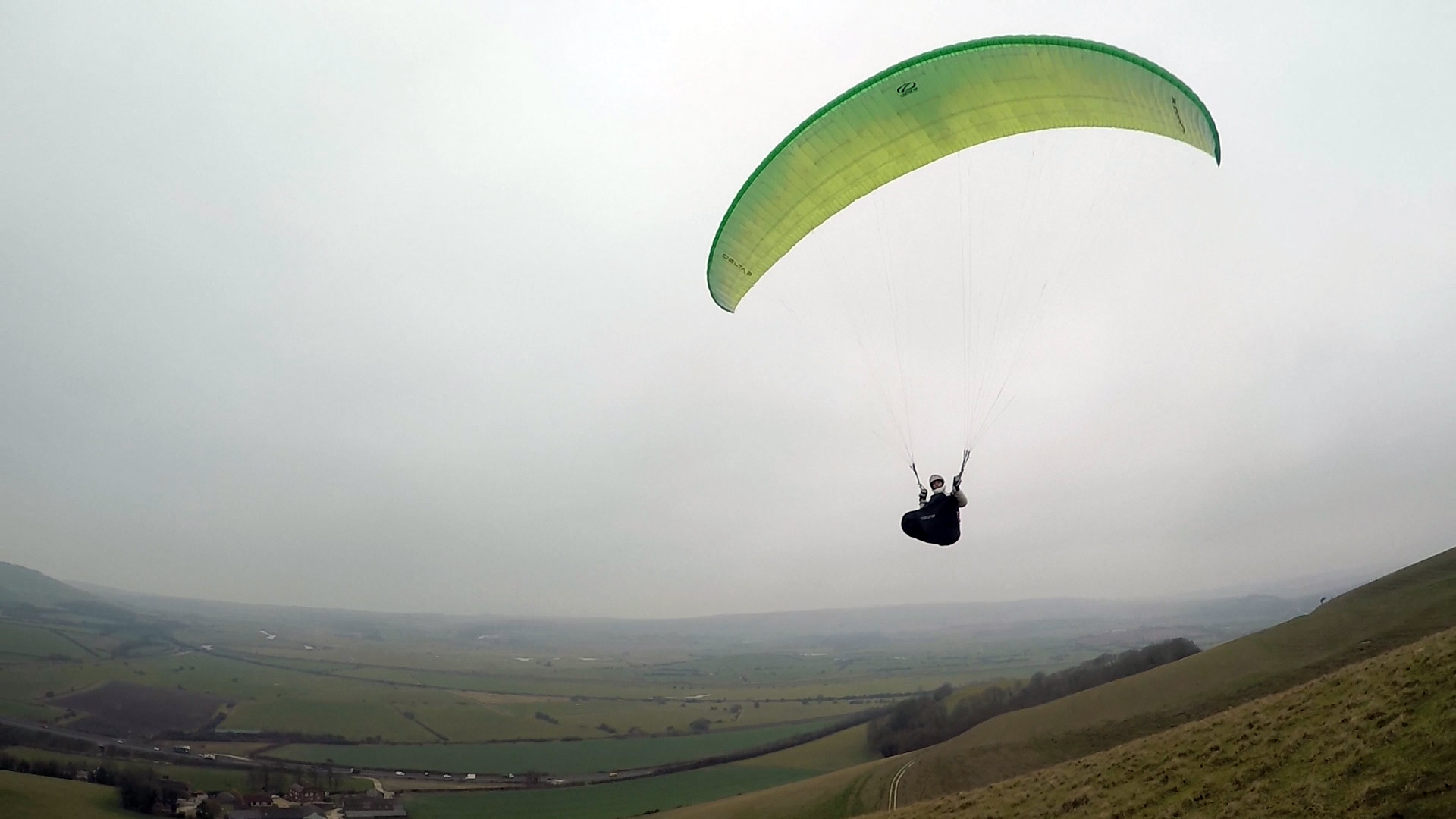
The Ozone DELTA 3 is a confidence building wing perfect for a pilot upgrading to the Sports Class (EN C) for the first time, and for pilots who want to push their adventures in the back country with a no-nonsense wing that is both calm and agile. The lightweight version (Alpina 3) is likely to be a big winner in the volbiv segment.
Find out more about the Ozone DELTA 3
Delta 3: Video review
Reviewed by Greg Hamerton. Thanks to Dickon Walker for being my wingman.
Want to see more?
There's no better way to support our efforts than buying kit from us. We'll ensure you get great service! Choose from our huge range AND enable us to produce more videos and articles to benefit the freeflight community.

